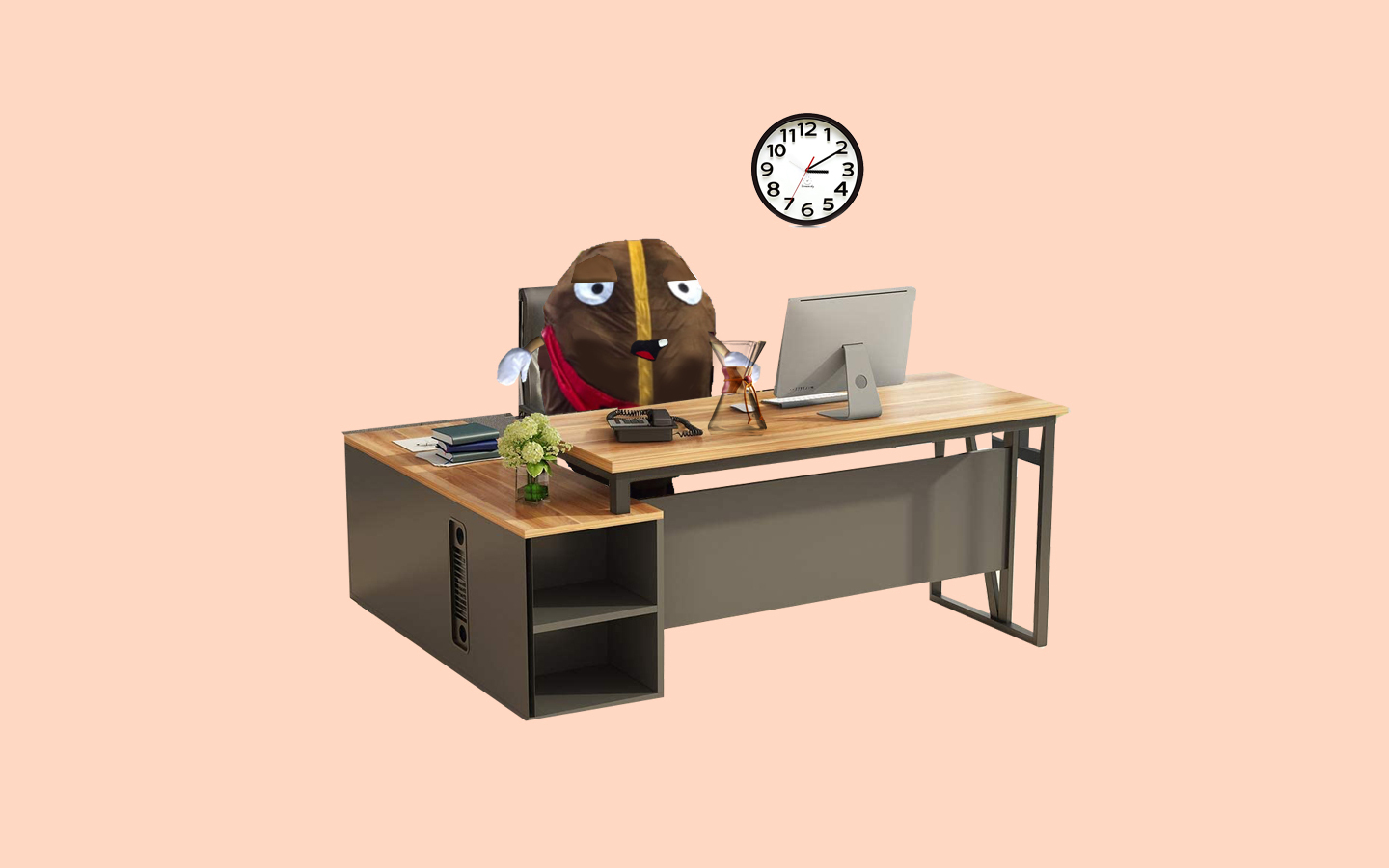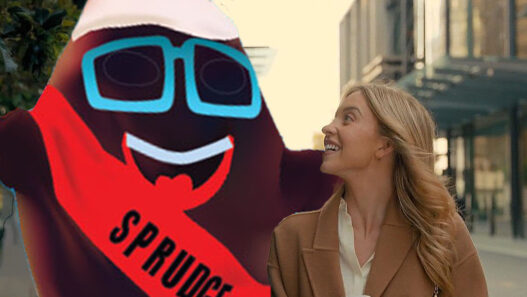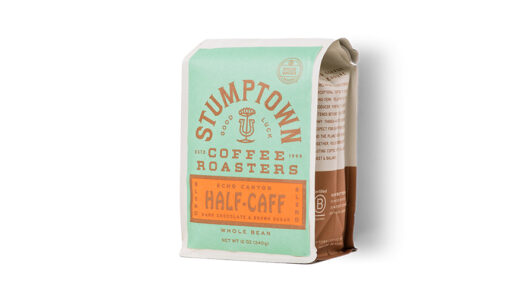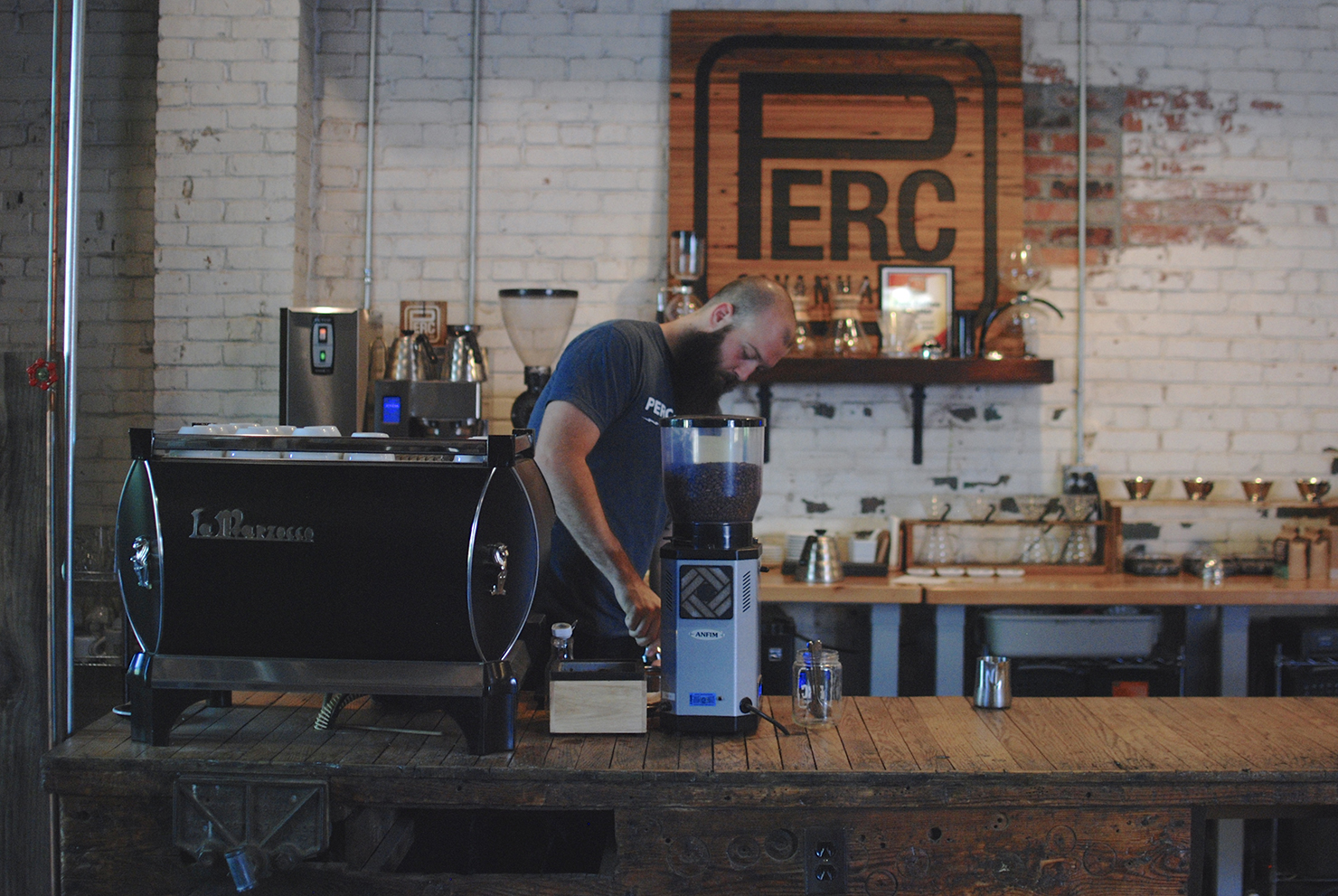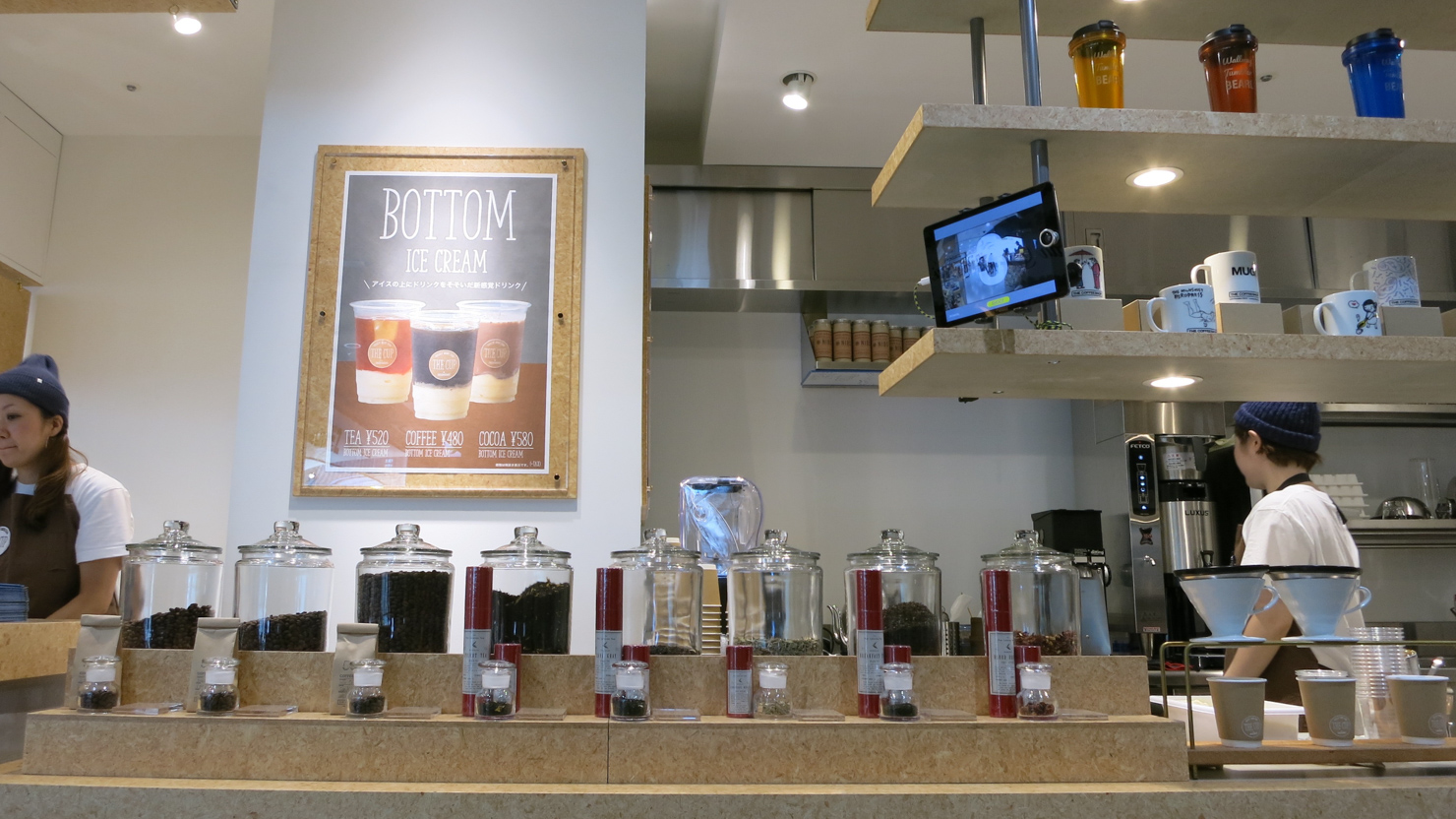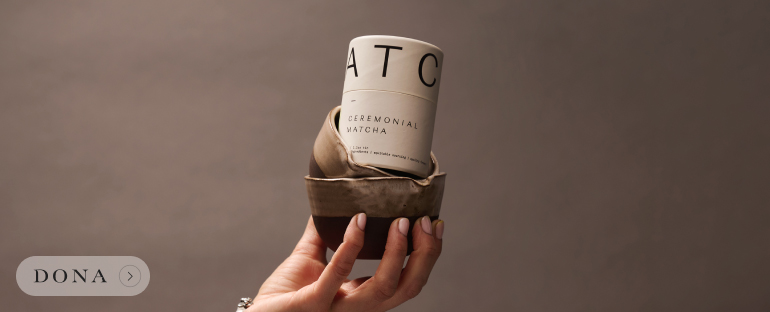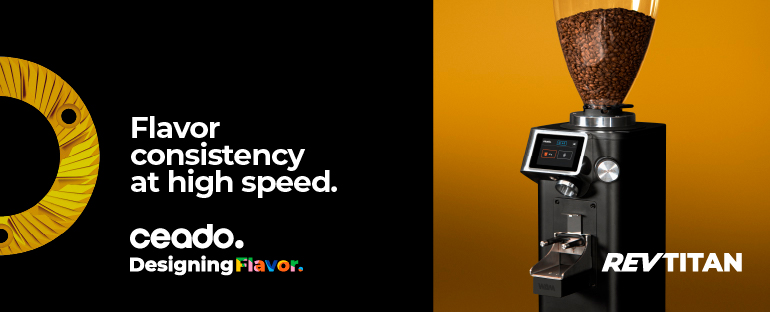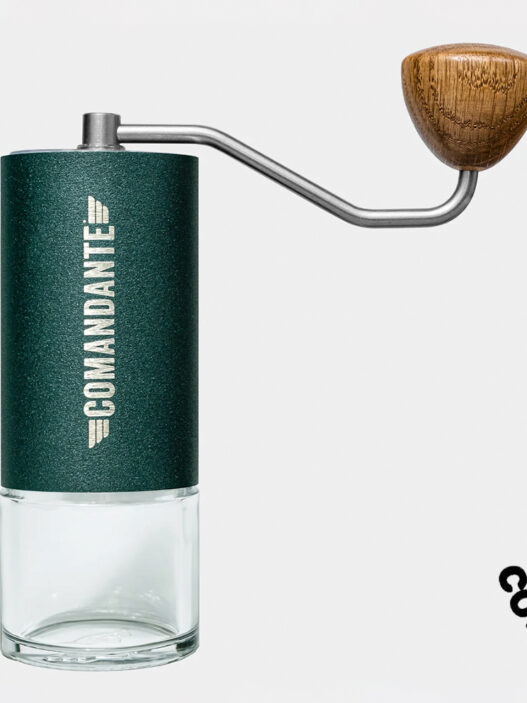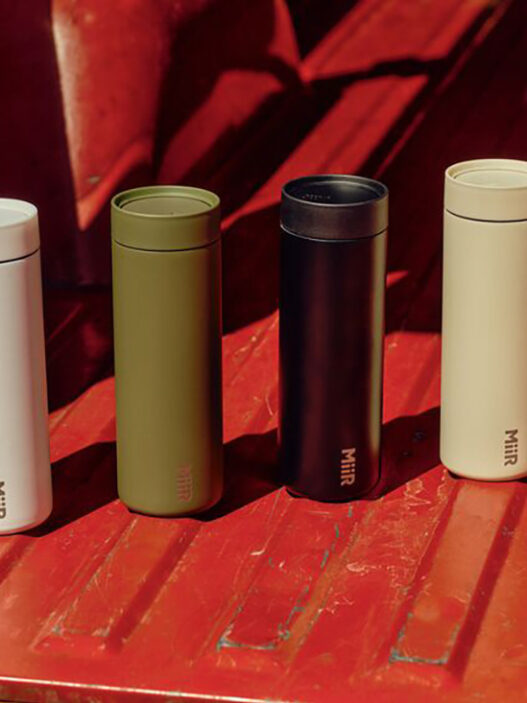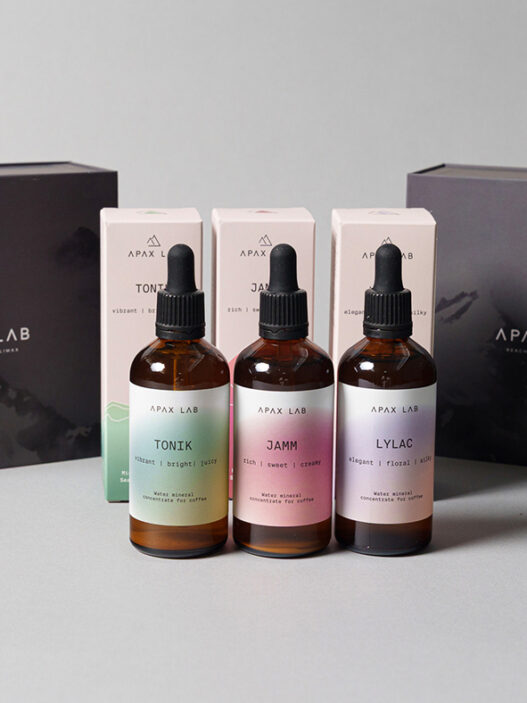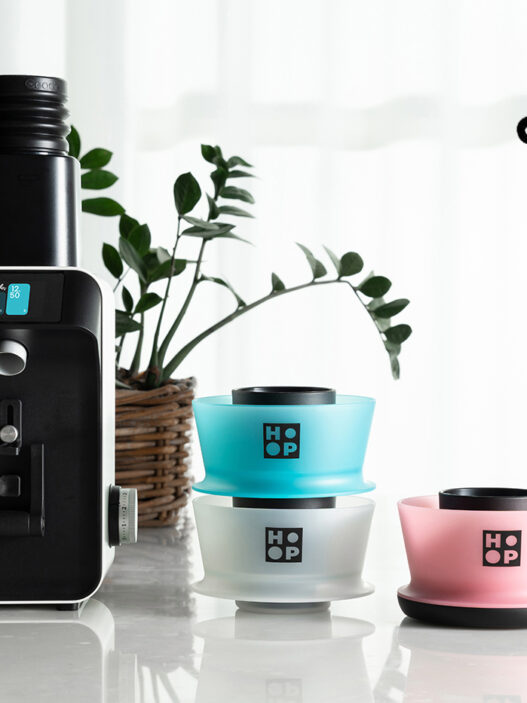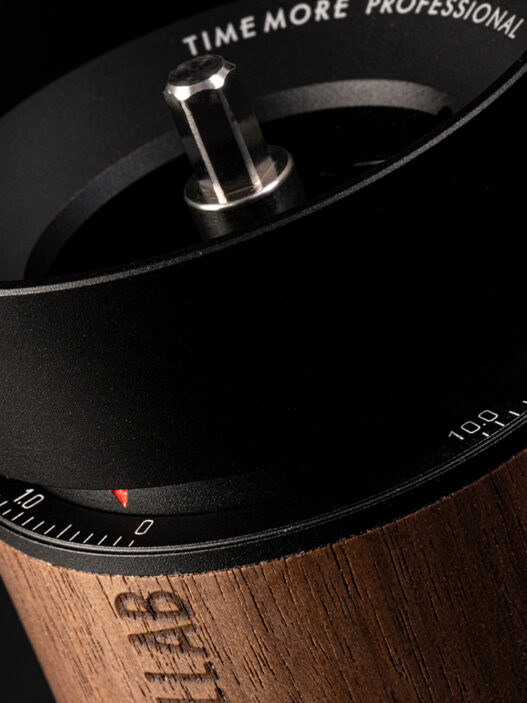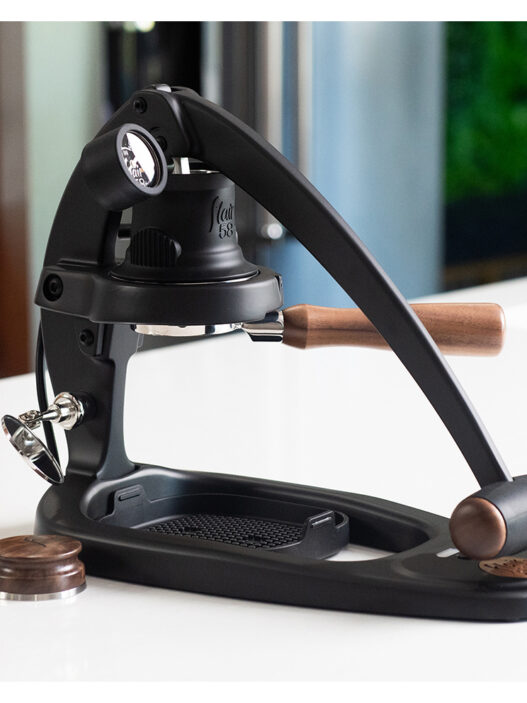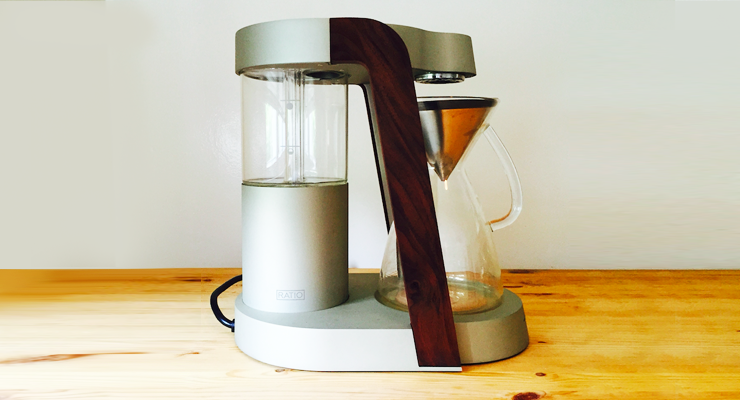
It’s been a long and winding road to market for the Ratio Eight, the luxury home coffee brewer developed by Mark Hellweg of our friends & partners at Clive Coffee. From a “World’s First Look” back in late 2013 to now, the project has gone through twists, turns, trials, and tribulations. But now the Ratio Eight is in full production at the brand’s Portland, Oregon assembly studio, shipping units each day and rapidly approaching fulfillment for their initial pre-orders. Their 500th unit shipped in August 2015.
We’ve wondered how the story of Ratio might turn out, and can report to you today that it’s a tale that continues to be told—launching a new piece of hardware from scratch is hard, especially as a start-up. Today, the Ratio verily exists, and indeed, the machine looks gorgeous and brews a nice cup of coffee. There are still design kinks being worked out; the Ratio Eight machine we were given access to for this feature had some minor quirks, but is now in everyday use here at Sprudge Labs. Hellweg, for his part, calls the whole process “exhilarating” and “terrifying” in the candid interview you’ll read below.
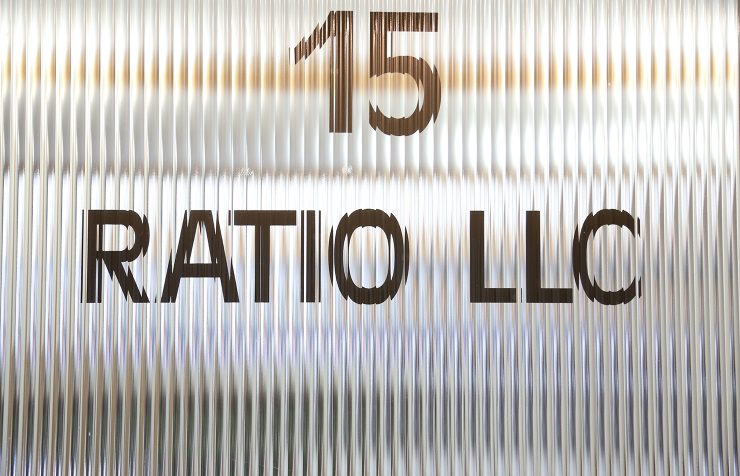
The product’s launch period is rapidly coming to a close, and in a few short weeks, the “pre-order” language will be removed from Ratio’s website altogether. Hellweg tells us a more formal ordering process with tight delivery dates is coming. Orders placed today, in late August, are estimated to arrive in early October.
It’s not often you’ll find an individual so closely aligned with a piece of coffee equipment, but the Ratio Eight is every bit Mark Hellweg’s baby. Short of having his name on the product itself, it’s hard to imagine how one could have more involvement from a design, branding, and aspirational perspective. We sat down with Hellweg here in Portland at his Ratio HQ to get an update on the project, its development process, and what’s next for the Ratio brand.
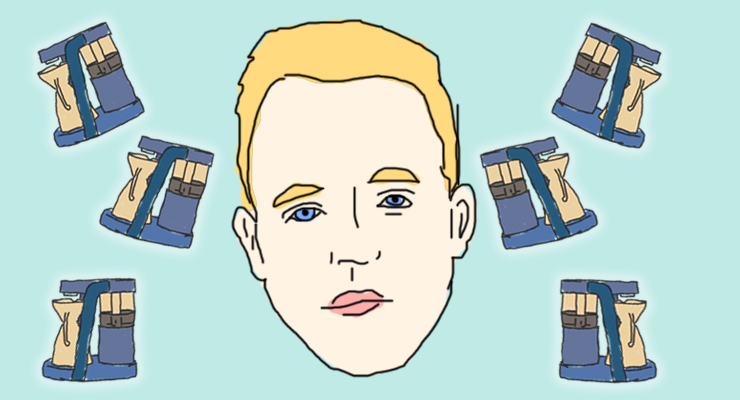
Hello Mark Hellweg. For folks just learning about your product, tell us the timeline of landmark events of the Ratio.
Mark Hellweg: I suppose my brain has blocked out most of the terrifying aspects of product development, so the high level somewhat rosy view goes something like this:
September 2012: The design process began with sharpies and white paper. Three of us at the table—industrial designer, mechanical engineer, and myself.
April 2013: First prototypes ready. Anticipation builds.
August 2013: Announce the Ratio Eight and begin taking preorders. The deposits from preorders help, but only covers a fraction of the development costs.
January-May 2014: Production parts received—all looks good, except the handblown glass parts. The samples were excellent—clear, thick, consistent—but moving from samples to production means more people involved making the parts, and quality control was a major challenge. You cannot Google “borosilicate glass parts for small-scale, quality-obsessed startup making 1,000 machines.” We had to blaze a path, I guess, going through nearly a dozen factories, until we found an art glass factory willing and (mostly) able to make our parts. We visit all factories in person, breaking bread, sharing the vision, making it more than an economic transaction. So the hitch in glass parts forced multiple redesigns, resampling, retesting, reworking…
July 2014: Begin design and engineering of a thermal carafe. We found the typical manufacturing techniques to be high on function, low on form. We pushed and pushed to find a way to avoid a plastic molded top & handle commonly used on thermal carafes. Some progress but no resolution.
December 2014: Finally, we start receiving production glass parts that work as designed. The incoming pace is a fraction of what we need, and we have to continually push out the shipment estimates. I managed all calls and emails until August 2015, so it was a near constant effort at communication on the problems we were facing and how we were fixing them. My wife is a saint for putting up with me during this phase.
January-May 2015: Filling preorders, celebrating initial positive feedback, carefully considering negative feedback, begin working on plans for fall 2015, once preorders are cleared.
June 2015: Finalize thermal carafe part files and kick off tooling.
August 2015: Ship 500th unit.
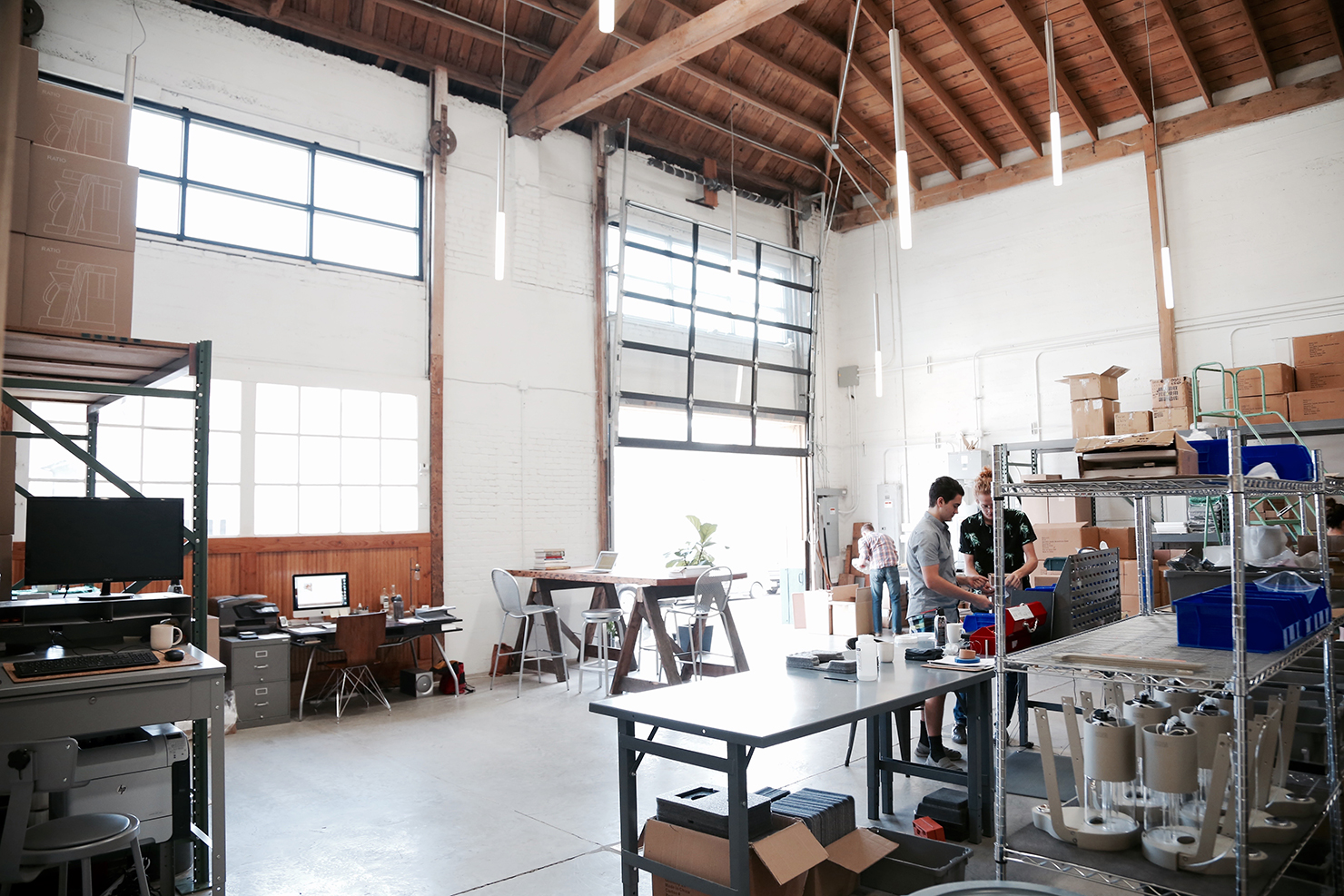
You just moved into a larger factory space; can you tell us about that? How many employees does the Ratio have now?
We found a light-filled space with high ceilings and concrete floors in the industrial southeast waterfront of Portland. I suppose there are much cheaper and more efficient industrial parks to grow a manufacturing company, but design and craft and a sense of place has always been a key part of the Ratio brand and I just can’t tolerate a soul-crushing concrete tilt-up structure in the ‘burbs.
We’ve expanded the team now to 10 people, with the majority being assemblers and QC staff. We specifically filter for people who like the steady cadence of carefully and slowly building coffee machines while Coltrane or Jobim plays in the background. We do not yet have white embossed smocks and matching caps for everyone to wear but that is definitely being considered. I’m only partially kidding…
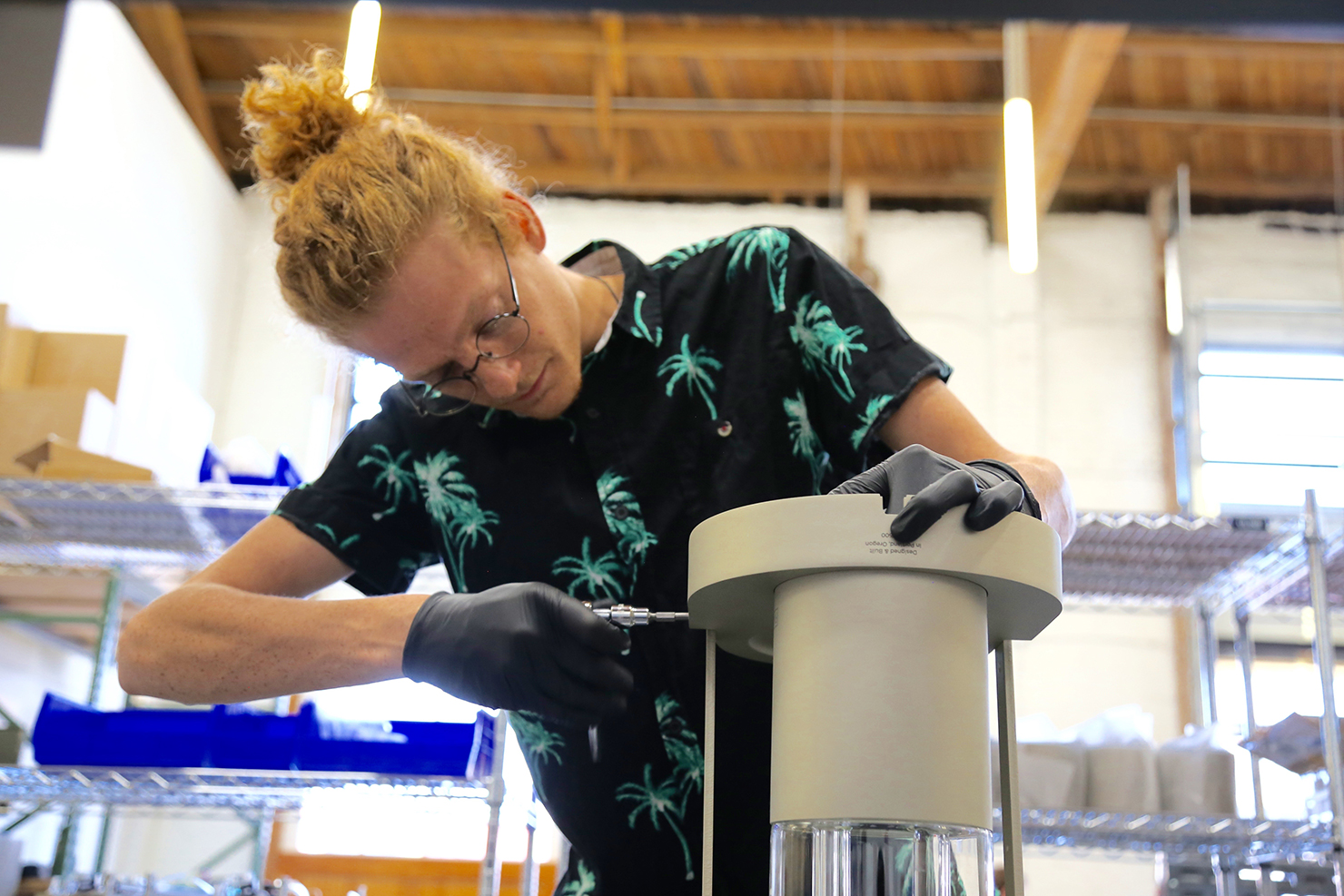
What positive feedback on the Ratio Eight has left you overjoyed? And what criticisms have you taken to heart?
Launching this product for me has been a mix of exhilaration that comes with making something new, crossed with the heart-palpitating terror that people may actually hate what you built, or they might burn themselves and sue you out of existence.
Several times a week I receive a multi-paragraph email from a customer that says they love the sculptural quality of the Ratio form factor—that the coffee tastes smooth and flavorful—that the quality is unmatched—that they’re glad we stuck to glass tanks even though it took damn near an extra year to get it all figured out. These notes are treasured, and as you can imagine make the other startup pains more bearable.
We’ve taken some heat for the tank measurements being off, including a recent note from a mainstream national reviewer. The cause is the variance in volumes resulting from handblown glass and the difficulty of adjusting the silk screening process for each individual tank. We have taken this feedback very seriously and have invested in new fixturing machines for the tank measurements.
Our price point is undoubtedly pushing the normal bounds of home coffee makers and we get some flak for that. Did you know it takes an hour and a half to build the Ratio Eight? We’re in the challenging spot of being a small company with high standards, but with ambition to go beyond just an artisan lifestyle business. I’m eager for Ratio to have the economies of scale that we can begin to offer more affordable options without compromising our brand promise of beauty, quality, and great coffee.
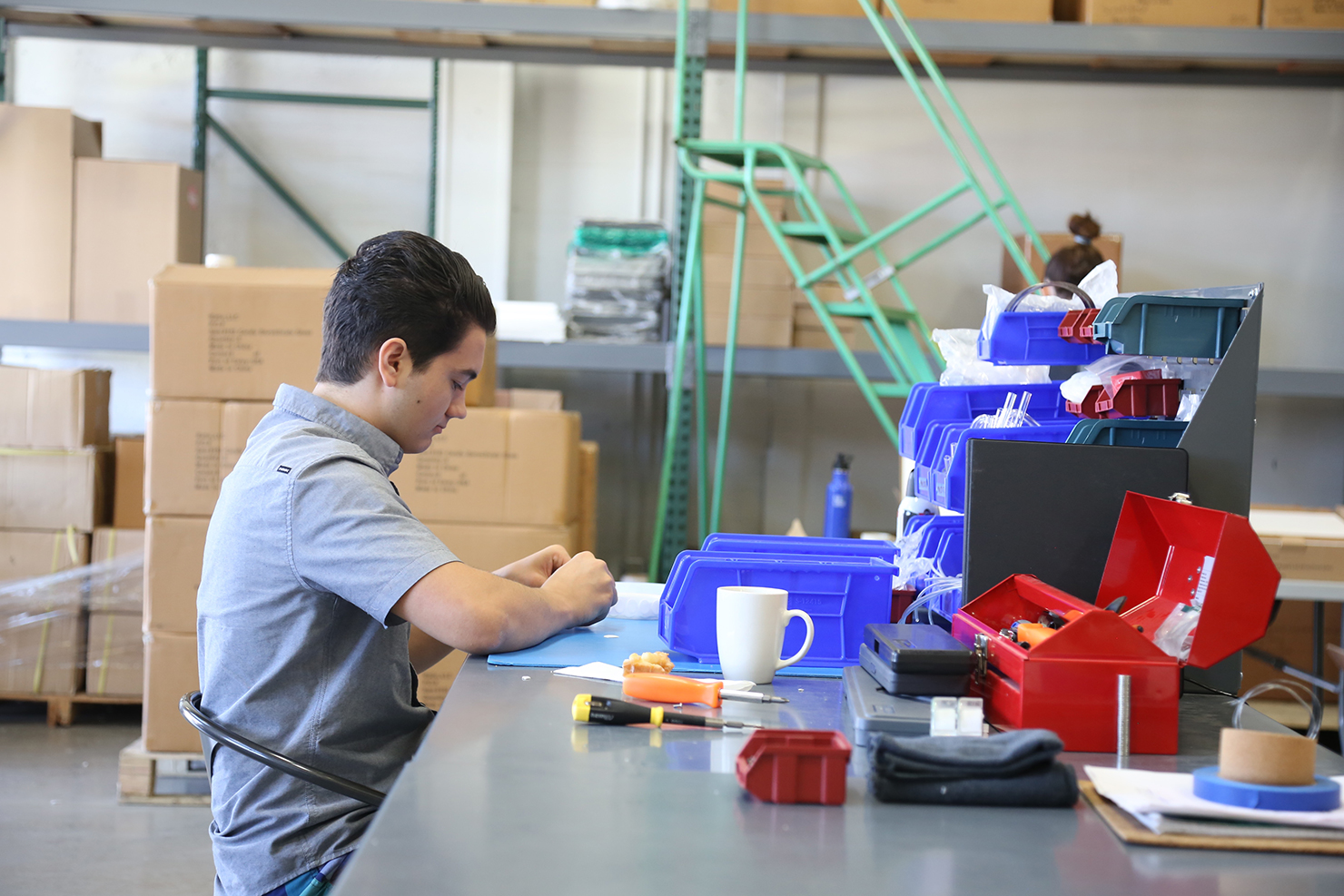
After all the time you’ve spent developing the Ratio, who is this product for? Who is your ideal user?
I’m still figuring that out, but the common thread is people who are interested in beautiful objects; that look for materials like wood and glass that are very tactile and almost heirloom, to use a probably overly precious word; that care about the ritual of making coffee and need something beyond a well-considered manual pour-over setup. We have customers ranging from retired couples in the Midwestern states to single tech industry folks in the Bay Area to well-regarded roasters from around the world.
Price points for coffee makers are set absurdly lower than espresso machines are. Maybe it’s because they involve steam and pumps and big metal boxes—for whatever reason, $700 is regarded as a perfectly reasonable price for a very rudimentary Italian-made espresso machine, while anything north of $300 is considered expensive for a coffee maker. So, we’re shaking up the category of coffee makers, and our ideal customer gets that quality cannot be faked or short-cutted.
It’s not about income levels or the “luxury” market. I had a long email exchange with a fixed-income retiree who had to save for several months to get a Ratio Eight. Many people these days on artist and college student budgets decide for themselves what’s worth investing in. One pair of fine Japanese denim or seven pairs of H&M?
If you’ve ever spent money on a fine bottle of champagne for the right occasion, ignoring that you’re going beyond the price points your income should dictate—that’s the Ratio customer.
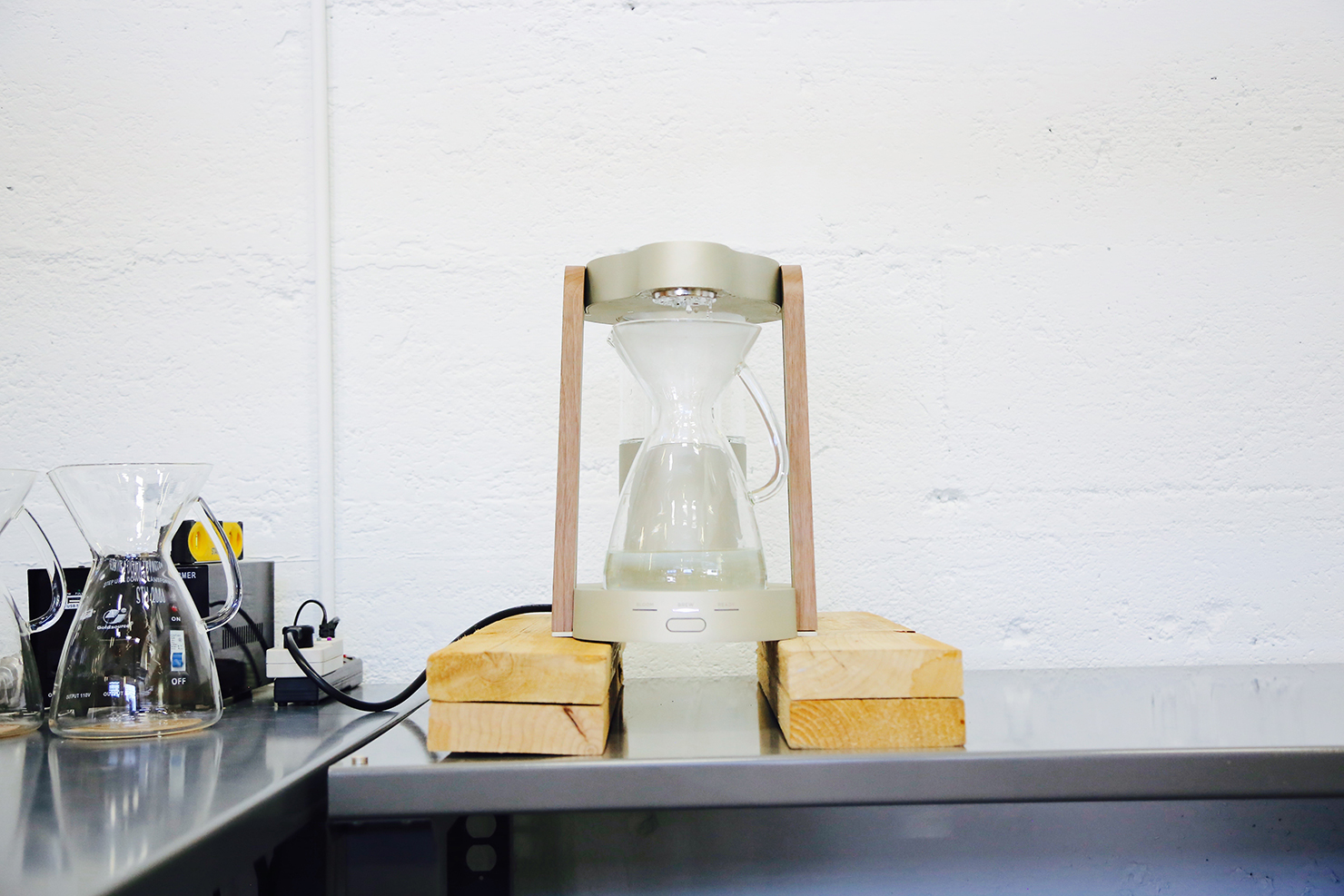
What is coming next for the Ratio brand?
We’re preparing to announce some new variations of the Ratio Eight along with our thermal carafe. Our current preorder pricing will be adjusted higher to reflect the high cost of using glass. We’ve already begun shipping the Ratio Eight around the world in 220V versions and beginning discussions with future Ratio distributors. We’re daydreaming about our product road map and what to tackle next. If you had asked me in 2012 where we’d be in 2015, I’d have been wildly wrong in how much time, money, and effort it takes to build a design and build company from the ground up. What has redeemed these labors is the growing movement towards quality and beauty in many aspects of our lives. Ratio is just one company among a growing cohort that is developing very fine, long-lasting coffee tools. We’ve only just begun to see what might happen.
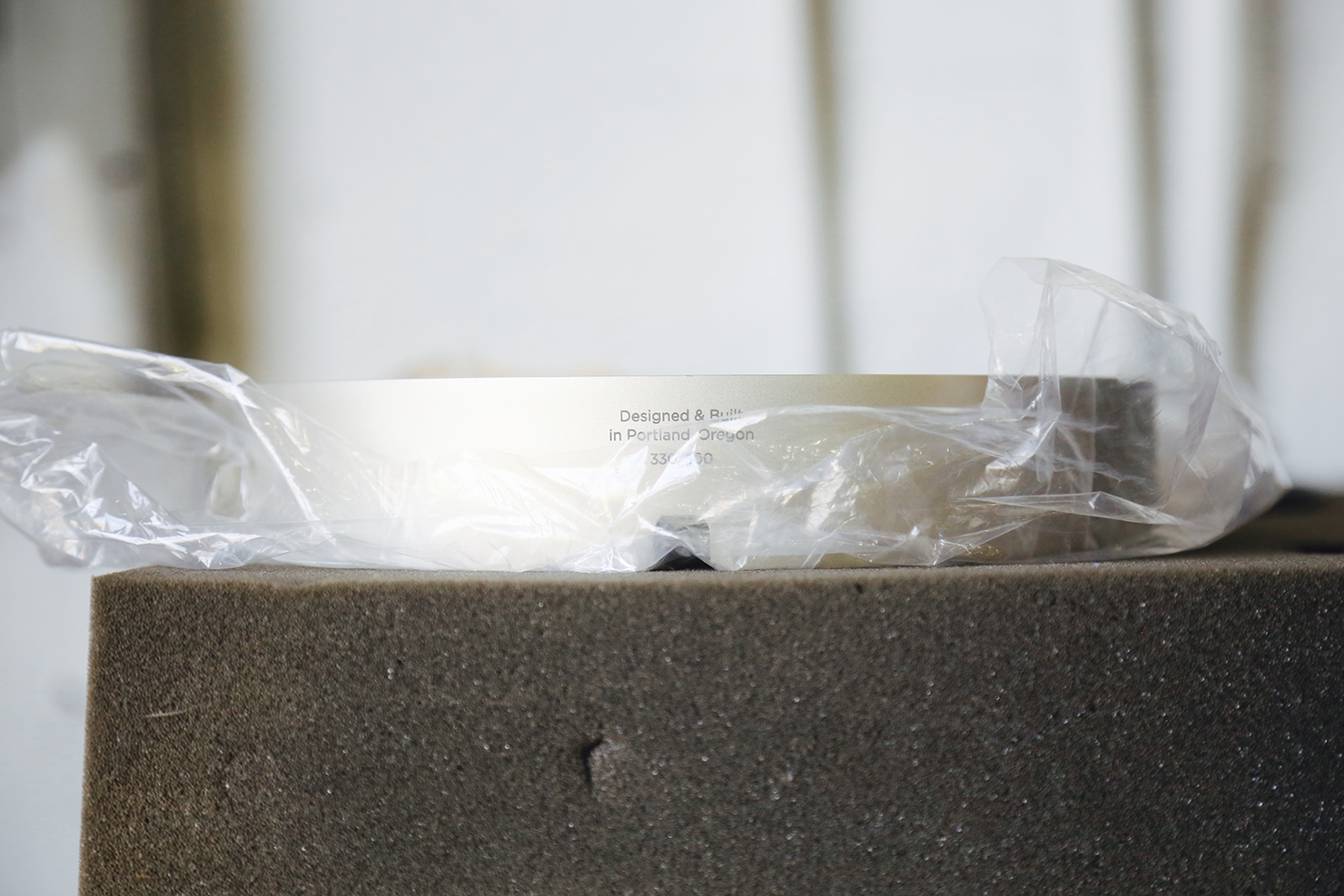
Jordan Michelman is a co-founder and editor at Sprudge.com. Read more Jordan Michelman on Sprudge.
Photos and illustrations by Zachary Carlsen for Sprudge.com.





